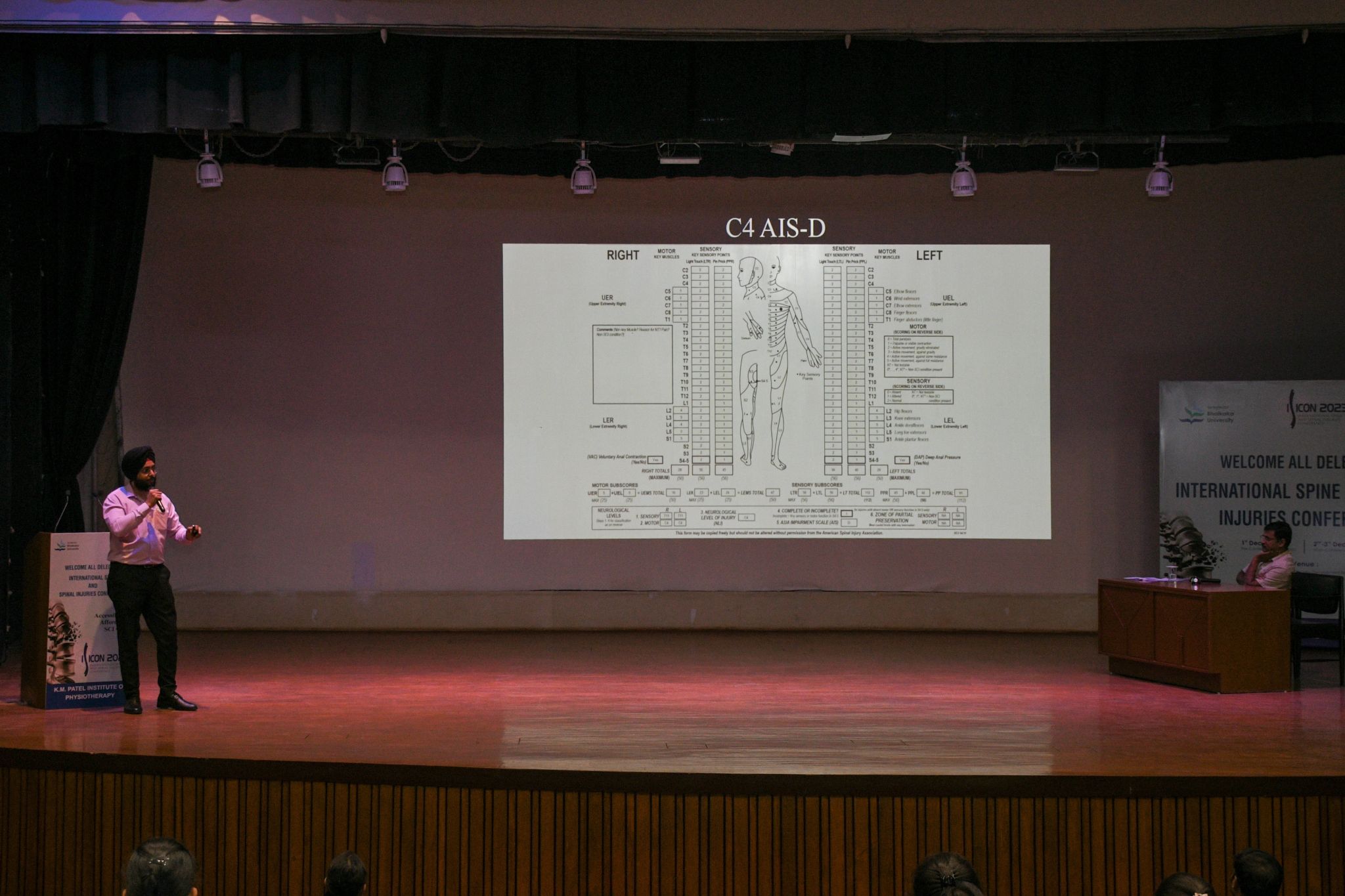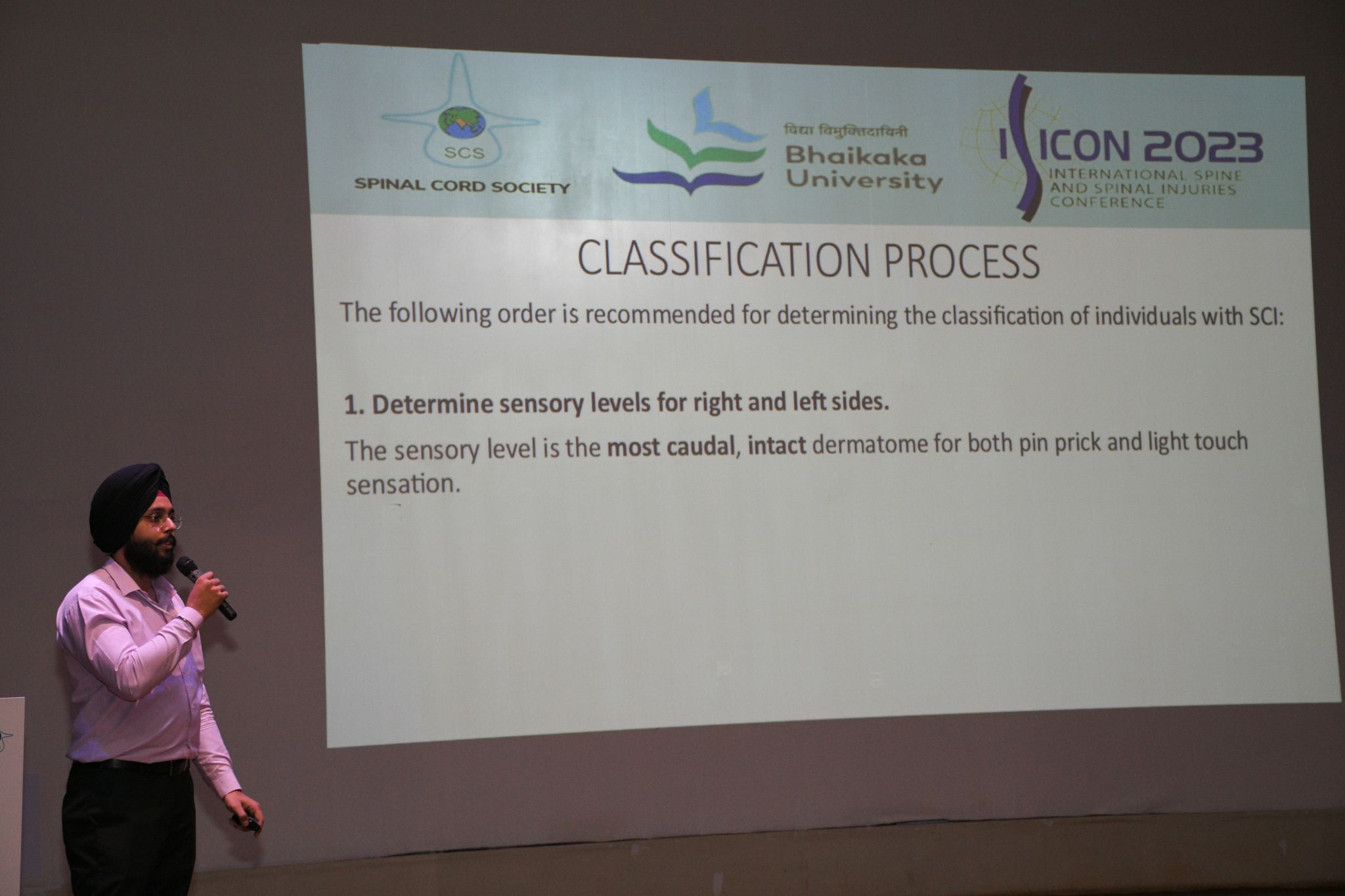Ishmeet Singh (PT)
There’s something uniquely powerful about a room full of minds eager to understand, challenge, and evolve. At ISSICON 2023 in Anand, Gujarat, I had the privilege of conducting a pre-conference workshop on the Interpretation of International Standards for Neurological Classification of Spinal Cord Injury (ISNCSCI) — a cornerstone of neurological assessment in spinal cord injuries.

Chaired by Dr. Karthikeyan Ramachandran, the session wasn’t just a lecture. It became a space of inquiry. We didn’t just go through the worksheet — we dissected the philosophy behind each decision point in the classification. Why do certain motor levels shift depending on sensory zones? How do we interpret neurological completeness when real-world presentations blur textbook boundaries?
The attendees — students, clinicians, and early-career researchers brought questions that were sharp, relevant, and rooted in clinical curiosity. We explored not only the methodology but also the practical dilemmas faced in Indian clinical settings where resources vary and documentation is still evolving. ISNCSCI, though standardized, needs contextual wisdom. That was the heartbeat of this session.

I’m always struck by how teaching becomes learning. The discussions triggered reflections on how we approach neurological data — are we truly listening to what the spinal cord is telling us, or are we rushing to label it? Workshops like this remind me that protocols aren’t dogma. They are living tools meant to serve real people, in real time.
Deep gratitude the organising committee for making this happen. ISSICON continues to be a fertile ground for innovation, collaboration, and grounded scientific dialogue.
Here’s to more spaces where knowledge is not delivered, but exchanged.
#ISSICON2023 #ISSICON #SpinalCordInjury #ISNCSCI #Neurorehabilitation #ClinicalExcellence
Leave a Reply